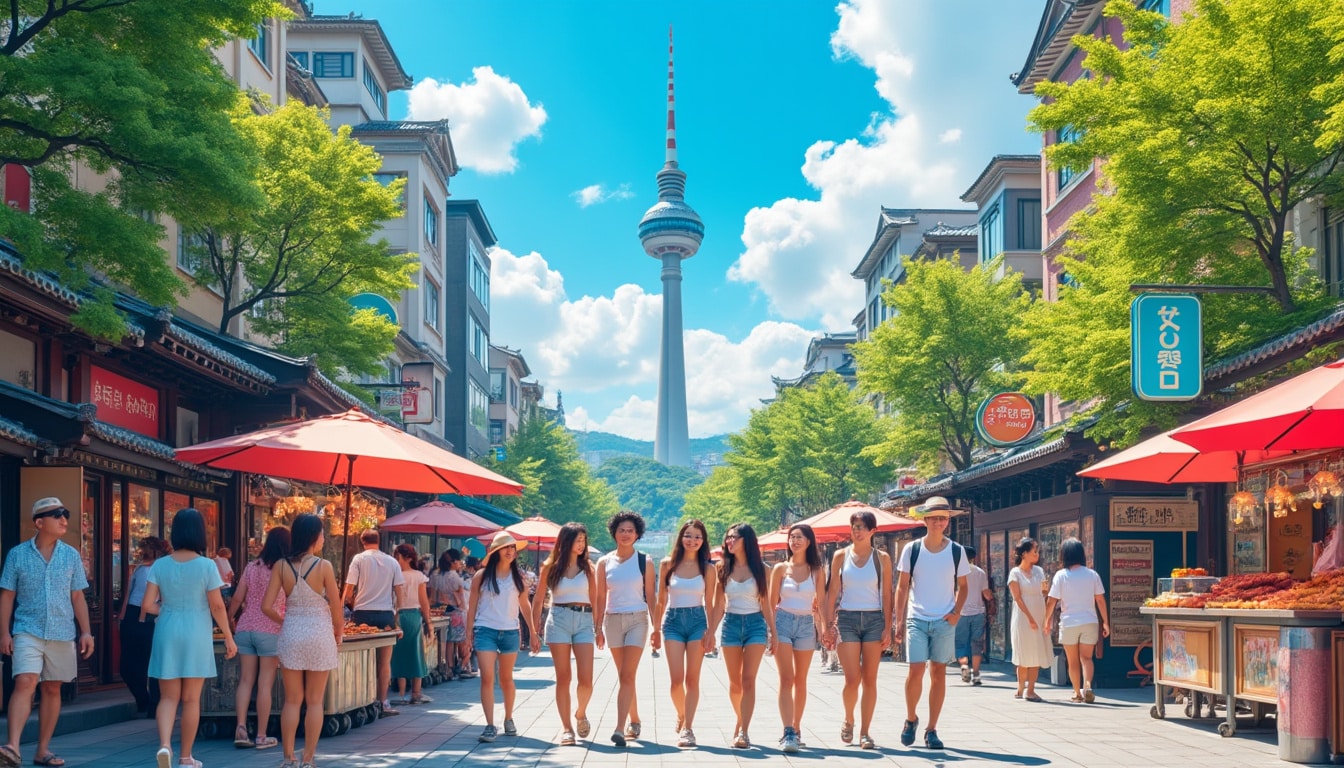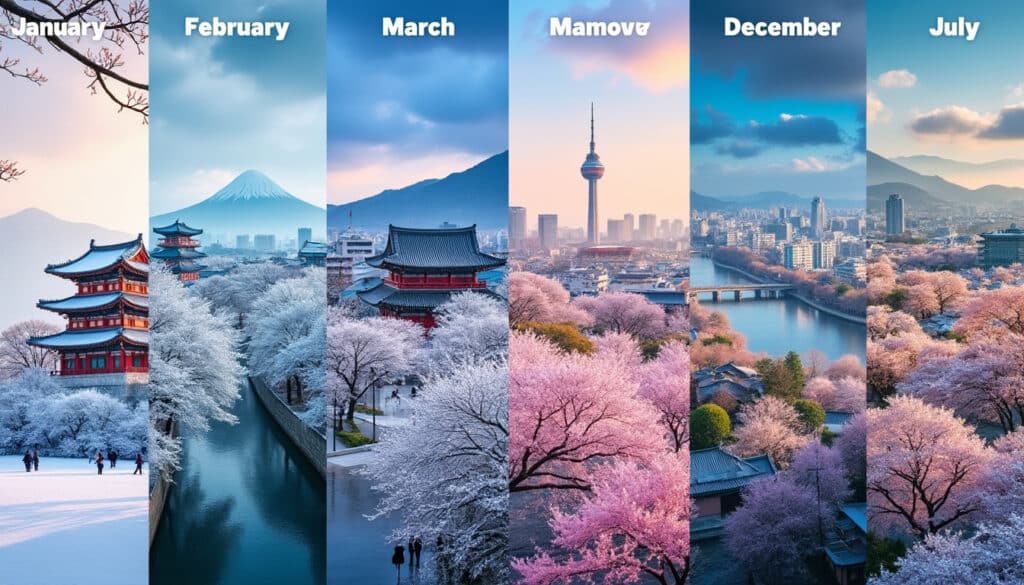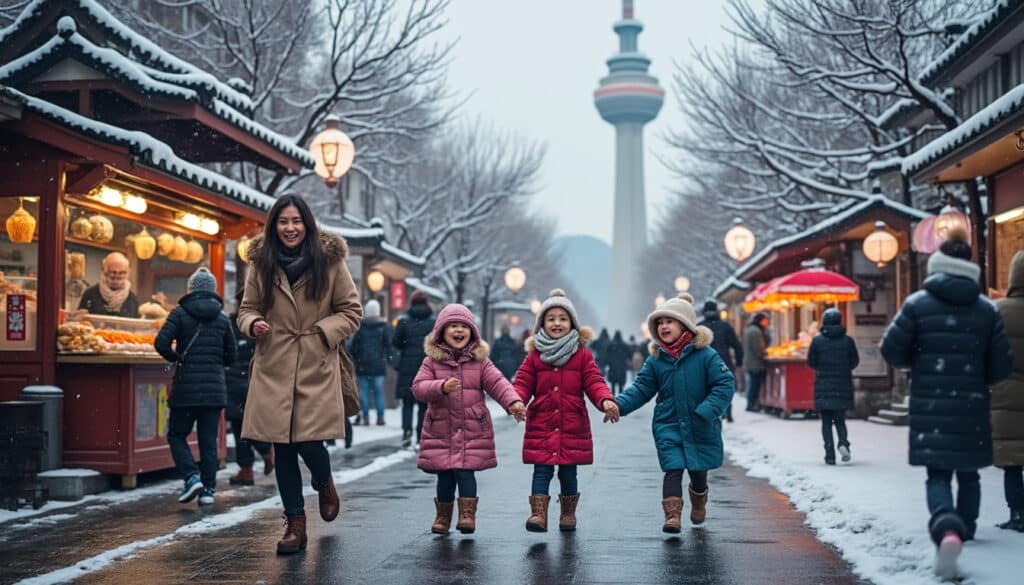As the vibrant cityscape of Seoul continues to captivate travelers and residents alike, understanding its temperature trends becomes essential for planning visits and daily activities. The city, known for its unique blend of tradition and modernity, offers a distinct climate profile, making it an intriguing subject for weather enthusiasts and casual observers. From the crisp chills of winter to the sun-drenched warmth of summer, Seoul’s temperature ranges are as dynamic as the city itself.
Exploring Seoul’s Seasonal Temperature Variations
Seoul, the bustling capital of South Korea, experiences four distinct seasons, each bringing its own set of temperature characteristics. Understanding these variations is vital, not only for potential visitors but also for residents navigating daily life. During winter, temperatures can drop significantly, with averages ranging between -6°C to 5°C. This stark cold contributes to a serene, if not chilly, atmosphere, transforming the city into a winter wonderland covered in snow on occasion. Though infrequent, snowfalls add a picturesque layer to the city’s landscape, attracting tourists keen on experiencing a snowy Seoul. You can discover more about snow in Seoul during winter.
As spring arrives, Seoul wakes from its winter slumber, and temperatures gently climb between 5°C and 20°C. The infamous cherry blossoms give the city a pink hue, making it an ideal photographic backdrop. This bloom period is brief yet impactful, drawing crowds to parks like Yeouido and Namsan, eager to catch a glimpse of the delicate blossoms.
Summer in Seoul can be particularly intense, characterized by high humidity and temperatures soaring between 22°C and 30°C. The city often battles with humidity, complicating efforts to stay cool, even as locals and tourists alike enjoy the longer daylight hours and vibrant nightlife.
Autumn presents itself as one of Seoul’s most favorable seasons, with temperatures comfortably hovering between 10°C and 25°C. Known for its crisp air and clear skies, fall is perfect for outdoor activities and exploring the city’s autumn foliage. As the leaves change color, places like Namsan Tower and Mount Inwang offer breathtaking views, further cementing Seoul’s reputation as a city for all seasons.
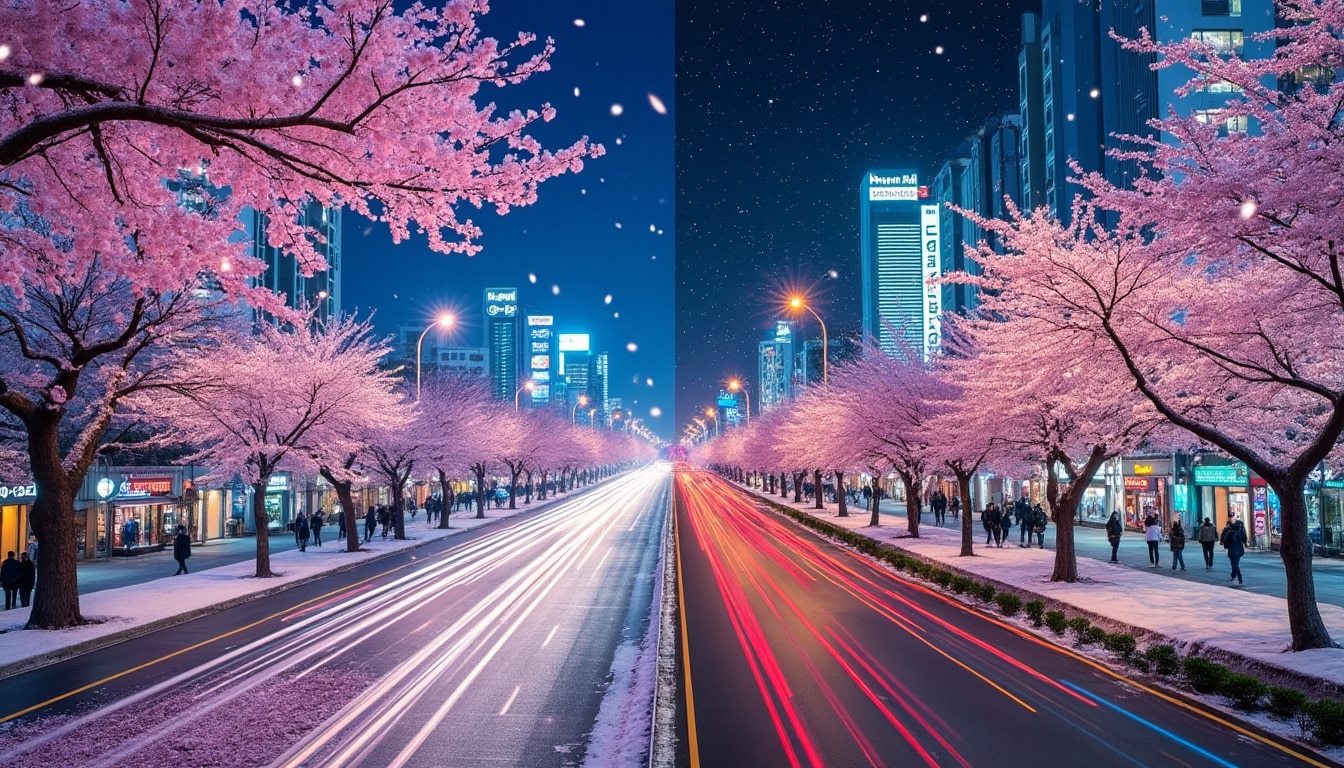
Each season in Seoul holds its own allure, deeply affecting the lifestyle and activities available within the city. By understanding these seasonal variations, individuals can plan their visits and activities more effectively, ensuring a fulfilling experience in South Korea’s dynamic capital.
The Influence of Urban Geography on Seoul’s Temperatures
The urban geography of Seoul significantly impacts its climate and temperature variations. Nestled among mountains and bisected by the Han River, the city’s topography plays a crucial role in creating unique microclimates. The mountainous boundaries help divert cold winds in winter, moderating extreme temperatures within the city. However, these geographical features also trap pollutants, occasionally exacerbating air quality issues, particularly during the colder months.
While the Han River contributes to a cooler atmosphere during the sweltering summer months, its presence is a double-edged sword. It enhances humidity, making the summer heat feel more oppressive. The river’s cooling effect is most pronounced in areas along its banks, where temperatures can drop a few degrees compared to surrounding zones.
Another fascinating aspect of Seoul’s urban geography is the “urban heat island” effect. The city’s extensive infrastructure, dense population, and rapid industrial activity lead to increased temperatures compared to suburban and rural areas. During summer, temperatures in urban centers can be several degrees higher than in adjacent rural territories. This phenomenon is a result of heat being trapped by buildings and roads, which absorb and retain more heat than natural landscapes.
Moreover, Seoul’s extensive subway and underground complexes, while convenient for transportation, can sometimes contribute to this effect. The heat generated by millions of commuters, along with operational energy, subtly elevates ambient temperatures. To mitigate this, innovative projects using green rooftop gardens and urban parks are being implemented, aiming to cool the city naturally by promoting plant-based cooling and reducing reliance on energy-intensive methods.
Seoul’s geographic features not only define its skyline but also its climatic experience. Recognizing how these elements affect temperature allows both residents and planners to devise strategies that optimize living conditions and enhance the quality of life in the city.
Seoul’s Extreme Weather and Natural Risks
Seoul’s climate, while generally mild, is not without its extremes and natural risks. The city is occasionally subject to temperatures that plummet well below average during winter or climb dramatically during summer, testing the resilience of its infrastructure and the patience of its residents. Dealing with -10°C in winter isn’t uncommon, prompting the need for robust heating solutions and winter gear from brands like Columbia and North Face to keep warm. On the flip side, summer can bring heatwaves that challenge even the most seasoned sun lovers.
These extremes necessitate a proactive approach to weather forecasting and preparation. Seoul employs advanced meteorological services like WeatherTech and AccuWeather to provide real-time updates and forecasts, helping residents and businesses prepare for sudden temperature changes. Advanced technologies from companies such as Climacell involve predictive analytics, offering personalized forecasts that consider local geographical idiosyncrasies.
In addition to temperature extremes, Seoul is prone to other natural risks, notably the annual rainy season or “jangma,” which can cause flooding. Heavy rains, combined with limited drainage in densely built areas, heighten the risk of urban floods, impacting both transportation and daily life. The city has invested in improving its water management systems to alleviate such issues, developing smarter drainage solutions and flood control infrastructure.
Seoul’s adaptation to these seasonal challenges is a testament to its resilience and forward-thinking urban planning, emphasizing the importance of integrating modern technology with environmental awareness.
Technological Adaptations for Weather Variability
In response to its weather variability, Seoul has embraced innovative solutions to mitigate the impact of extreme temperatures and natural events. This includes smart buildings that dynamically adjust their energy consumption based on climate forecasts from services like The Weather Channel and MeteoGroup. These technologies are designed to enhance energy efficiency and maintain comfortable indoor climates, regardless of outdoor conditions.
- 🌡️ Advanced climate control systems using ThermoPro technology.
- 💧 Efficient drainage solutions to handle seasonal rains.
- 🌿 Incorporation of urban greenery to combat the heat island effect.
- 🧥 Seamless integration with local lifestyle brands (Outdoor Research, Smartwool).
These adaptations reflect Seoul’s commitment to sustainability and the well-being of its residents, providing a model for other cities facing similar climatic challenges.
Understanding Daily Temperature Patterns in Seoul
An average day in Seoul ebbs and flows with the sun, as temperatures can vary significantly over the course of 24 hours. For example, mornings in May might start at a cool 15°C, gradually rising to a comfortable 25°C by late afternoon before dropping again to around 18°C in the evening. This pattern necessitates flexibility in planning daily activities, particularly for those unaccustomed to such fluctuations.
Important daily temperature considerations include:
| Time | Temperature (°C) | RealFeel | Precipitation Chance |
|---|---|---|---|
| Morning (6:00 AM) | 15°C | 14°C | 5% 🌧️ |
| Afternoon (3:00 PM) | 25°C | 27°C | 10% ☀️ |
| Evening (9:00 PM) | 18°C | 17°C | 2% 🌙 |
Seoul’s temperature fluctuations call for strategic wardrobe choices, often leading individuals to adopt a layering strategy, utilizing brands such as Smartwool for base layers and North Face jackets for cooler evenings.
Understanding these patterns allows residents and tourists to maximize their activities, whether it’s visiting landmarks during cooler morning hours or enjoying Seoul’s nightlife with appropriate attire.
Seoul’s Weather in Comparison to Other Global Cities
In comparison to other major cities worldwide, Seoul’s weather presents a unique profile that both surprises and fascinates. While not as temperate as Mediterranean climates, it offers a more balanced seasonal experience than more extreme climates found in northern Europe or the tropics.
For instance, cities like Tokyo share similarities with Seoul in experiencing distinct seasons, yet Seoul tends to have cooler winters and hotter summers, influenced by its positioning on the Korean Peninsula. Meanwhile, a city like New York might see similar winter lows, but its summers are often moderated by Atlantic breezes, unlike Seoul’s sometimes stifling conditions.
Here’s how Seoul compares to other cities:
| City | Annual Avg. Temp (°C) | Extreme Temp Range (°C) |
|---|---|---|
| Seoul | 12°C | -10 to 38°C 🌞🌨️ |
| Tokyo | 15°C | -5 to 35°C 🌸🔥 |
| New York | 13°C | -15 to 36°C ❄️☀️ |
For travelers considering multiple destinations, understanding these comparisons provides a clearer picture of what to anticipate in terms of packing and planning. Seoul’s wide temperature range calls for versatility, whether one is transitioning from the chill of January to the warmth of August.
The information provided here underscores Seoul’s rich climatic tapestry, inviting those intrigued by varied weather patterns to explore the city across different seasons.
FAQ on Seoul’s Temperature
- Does it snow in Seoul during winter? Yes, snow is possible, especially in January and February.
- What are the hottest months in Seoul? July and August are typically the hottest months.
- Is the humidity high in Seoul? Yes, the humidity is notably high during summer, particularly in July.
- When is the best time to visit for mild weather? Spring (April to June) and autumn (September to November) offer milder weather.
- How should one dress for Seoul’s weather? Consider layered clothing and prepare for both warm and cool conditions.
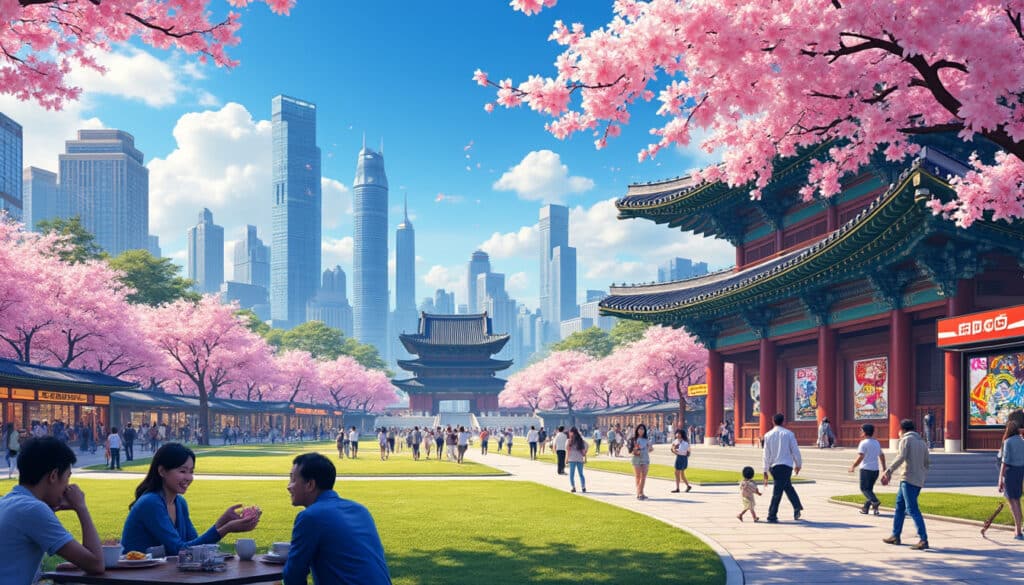
Seoul, the bustling heart of South Korea, boasts a climate as vibrant and varied as its cultural landscape. Visitors and residents alike are treated to four distinct seasons, each bringing its own flavor to the city. From the icy chills…
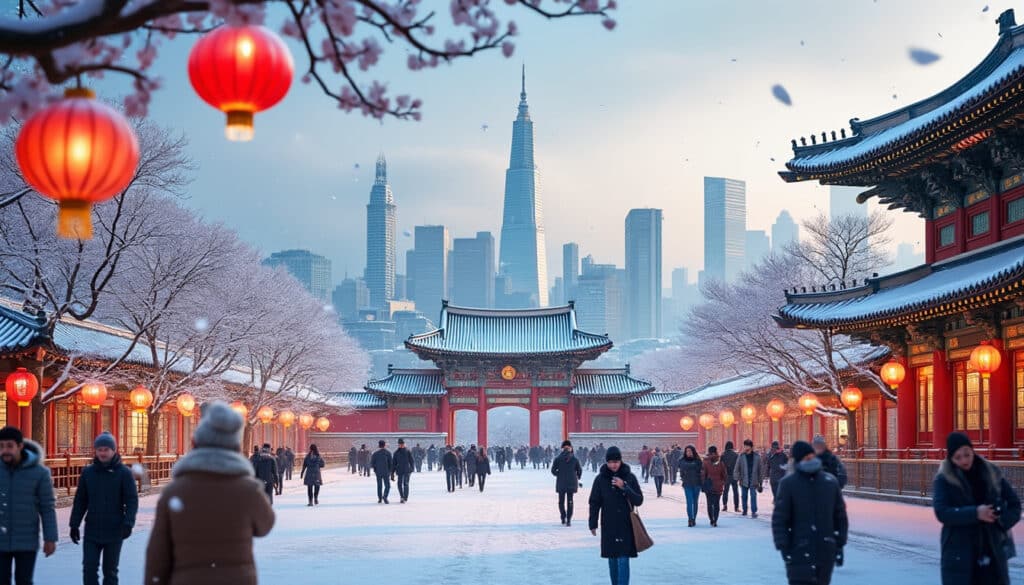
When imagining Seoul in winter, visions of snow-dusted palaces, serene parks, and bustling streets adorned in festive decorations might come to mind. But does it truly snow in Seoul? While South Korea’s capital city does experience winter weather, it doesn’t…

Flooding and natural risks in Seoul
Seoul, the bustling heart of Korea, is not without its challenges. As the city juggles rapid urbanization and meteoric technological advances, it also faces the formidable threats of flooding and other natural risks. Dubbed as one of the “Mega Cities”,…
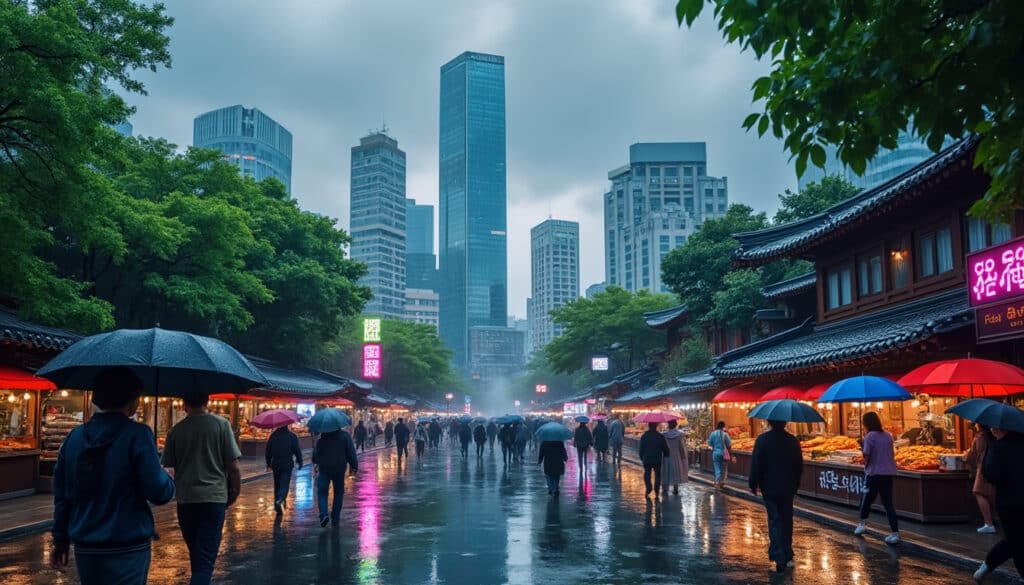
When one thinks of Seoul, the vibrant capital of South Korea, they might envision bustling streets, cutting-edge technology, and a rich blend of modern and traditional culture. However, nestled within these urban delights is a lesser-discussed yet crucial aspect: the…
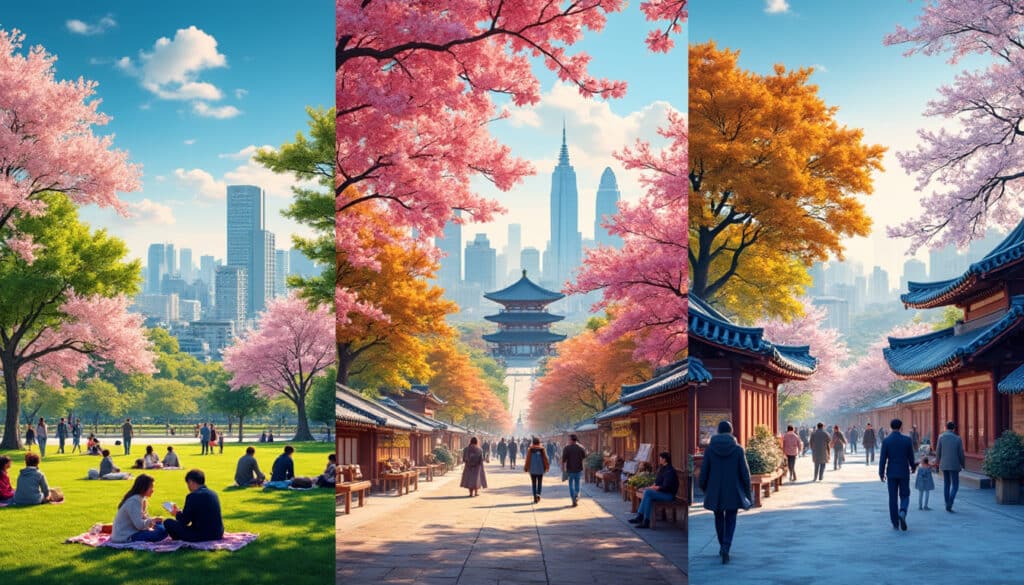
Is Seoul warm throughout the year?
Seoul, the dynamic capital of South Korea, is known for its rich culture and vibrant cityscape. Yet, it also presents a diverse climate that varies significantly across the year. Understanding Seoul’s weather patterns is essential for prospective travelers, businesses like…
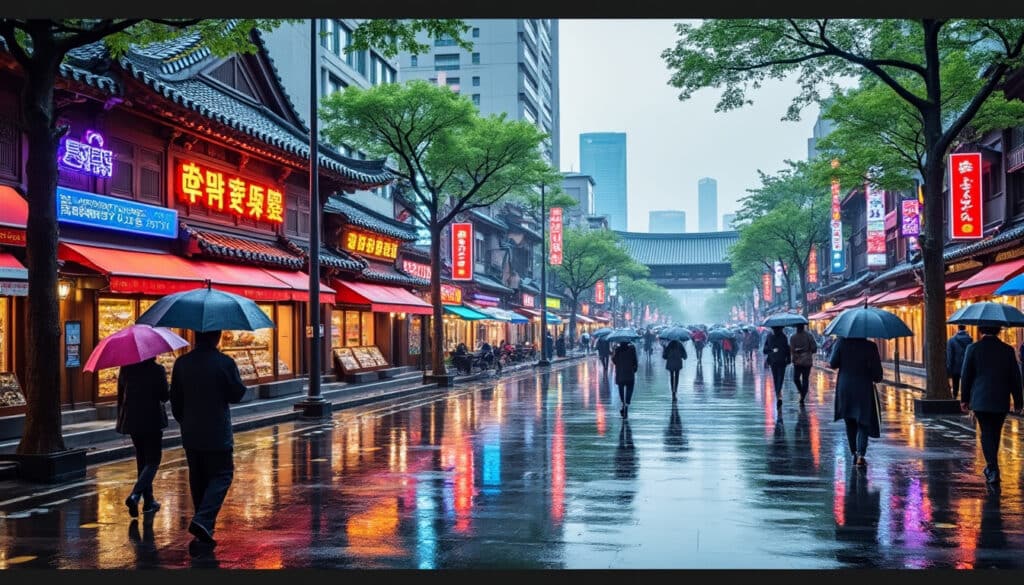
Rain and precipitation in Seoul
Seoul, the bustling heart of South Korea, is a city that experiences a wide array of weather patterns throughout the year. Its unique climate is characterized by hot, humid summers and cold, dry winters, influenced by its geographical location and…
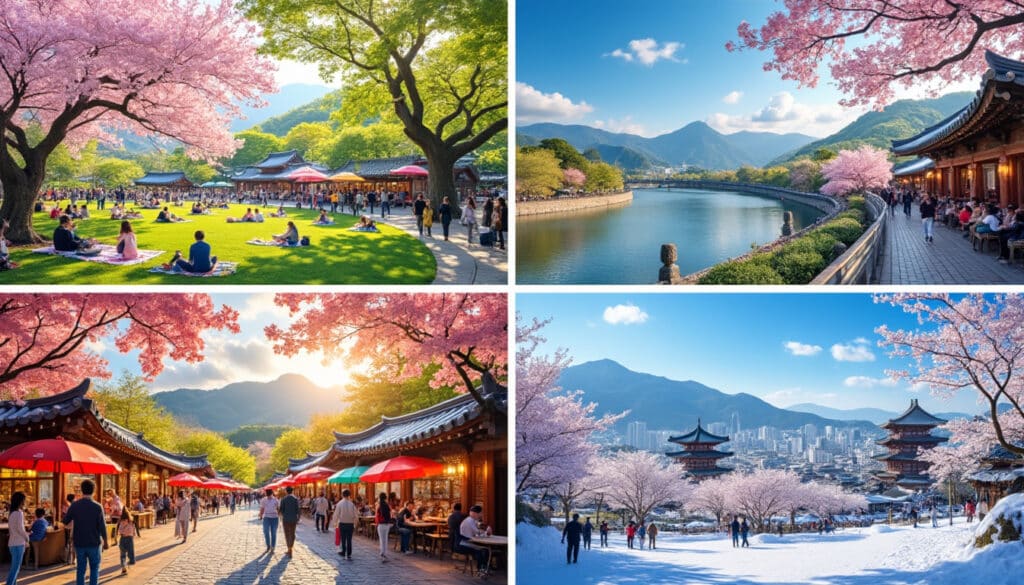
Seoul, the vibrant heart of South Korea, is a city that never sleeps. With its bustling streets and a culture that blends the traditional with the ultra-modern, it offers an experience for every kind of traveler. One of Seoul’s most…

Seoul, the vibrant capital of South Korea, presents a captivating blend of ancient traditions and bustling modernity. In this city where time seems to stand still and rush forward simultaneously, experiencing the beginning of a new day at sunrise is…
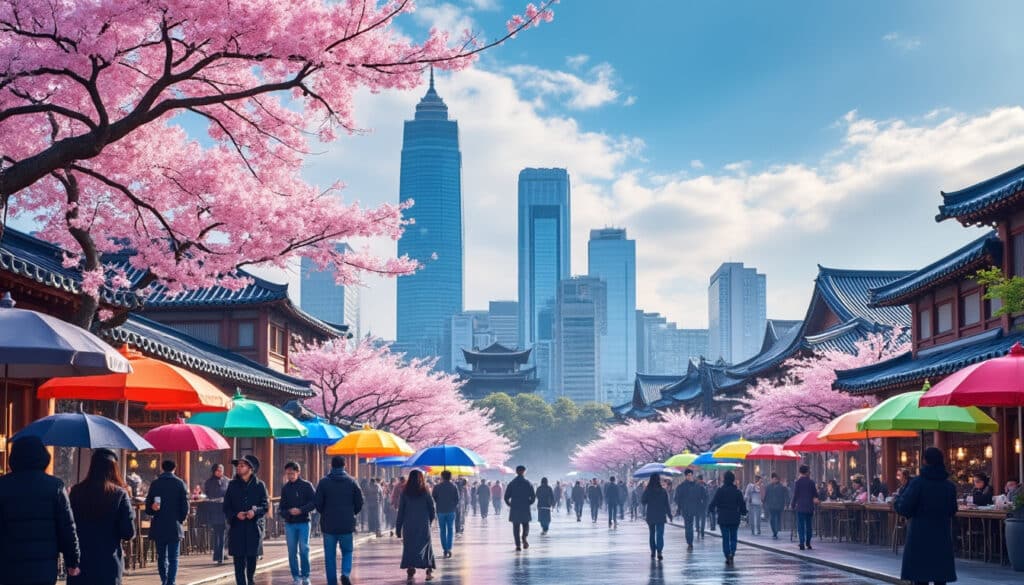
What is the weather like in Seoul?
Seoul, a bustling metropolis with a perfect blend of ancient traditions and modern innovations, often leaves its visitors and residents curious about its weather patterns. While the city is famous for its historic palaces, cutting-edge technology, and mouth-watering cuisine, understanding…
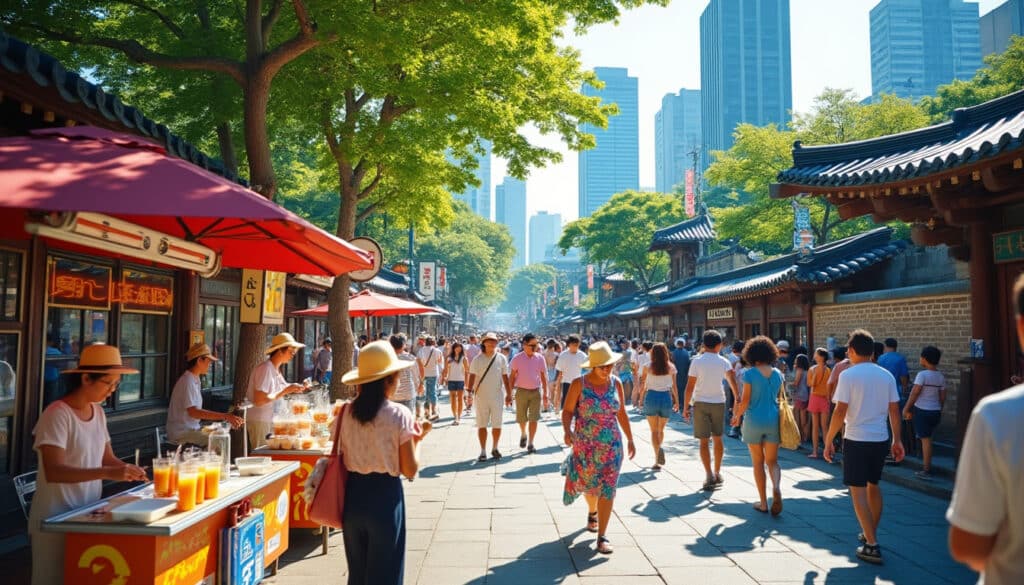
Seoul, a vibrant city known for its mix of traditional culture and modern innovation, transforms under the blazing summer sun. With its hot and humid climate, Seoul during summer is a true testament to the concept of endurance and adaptation.…

